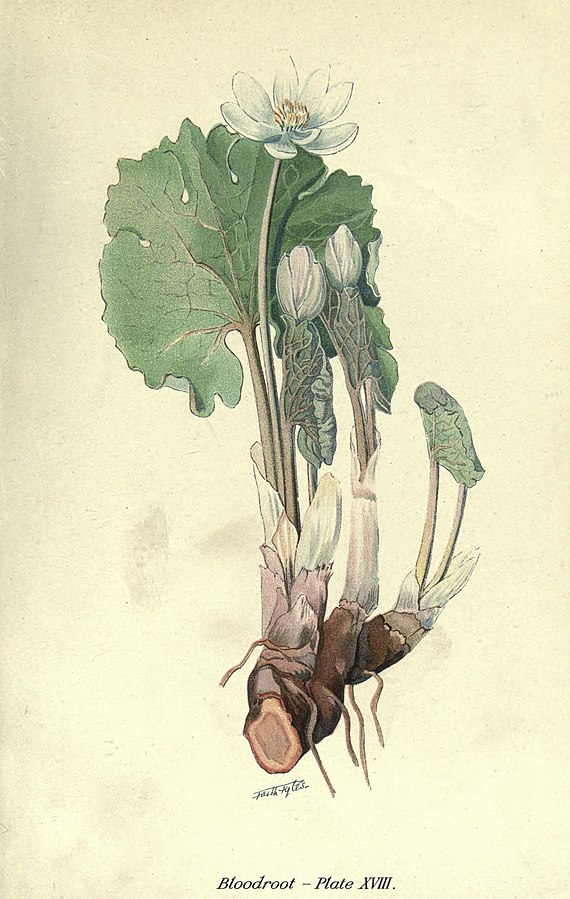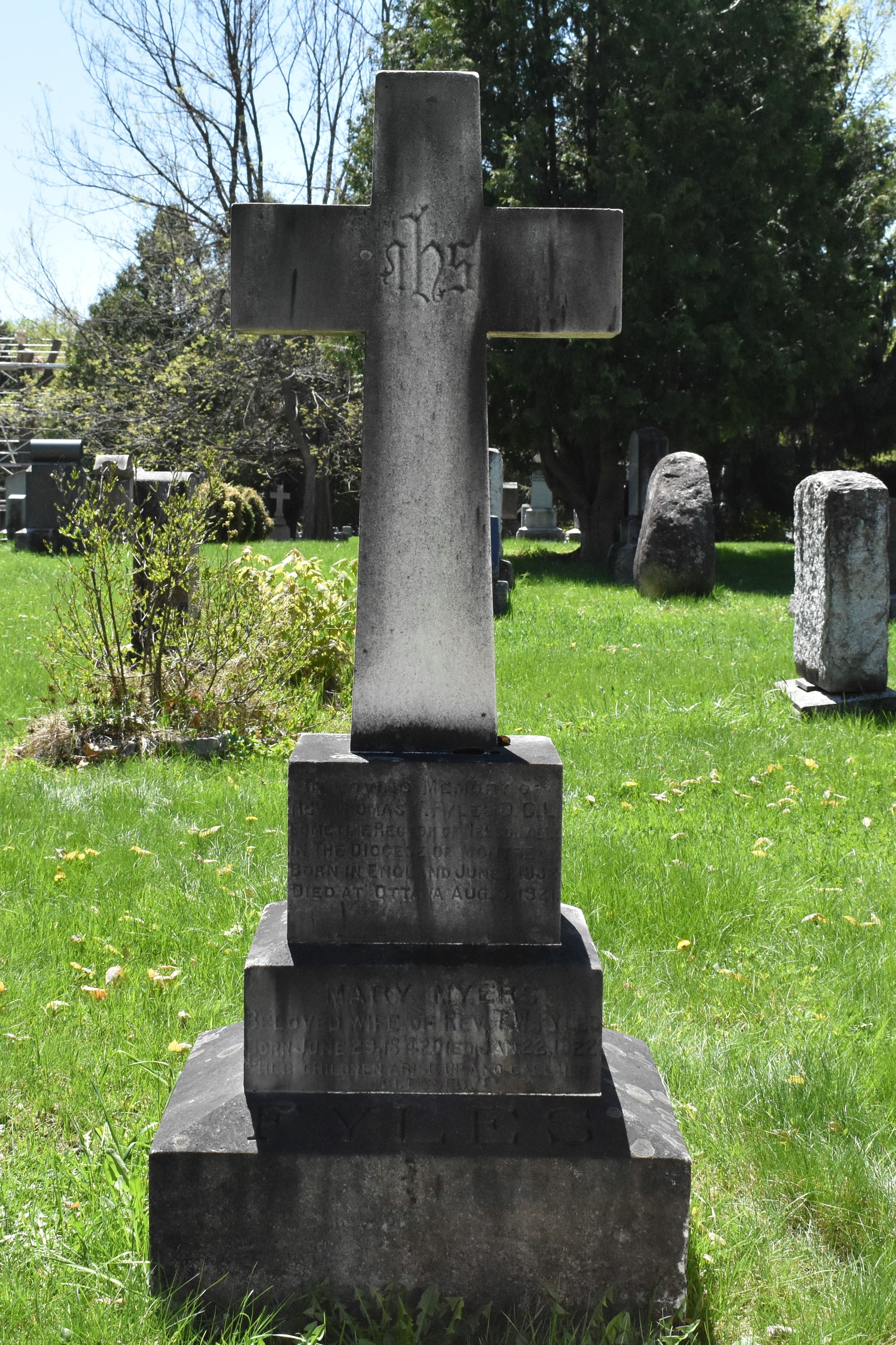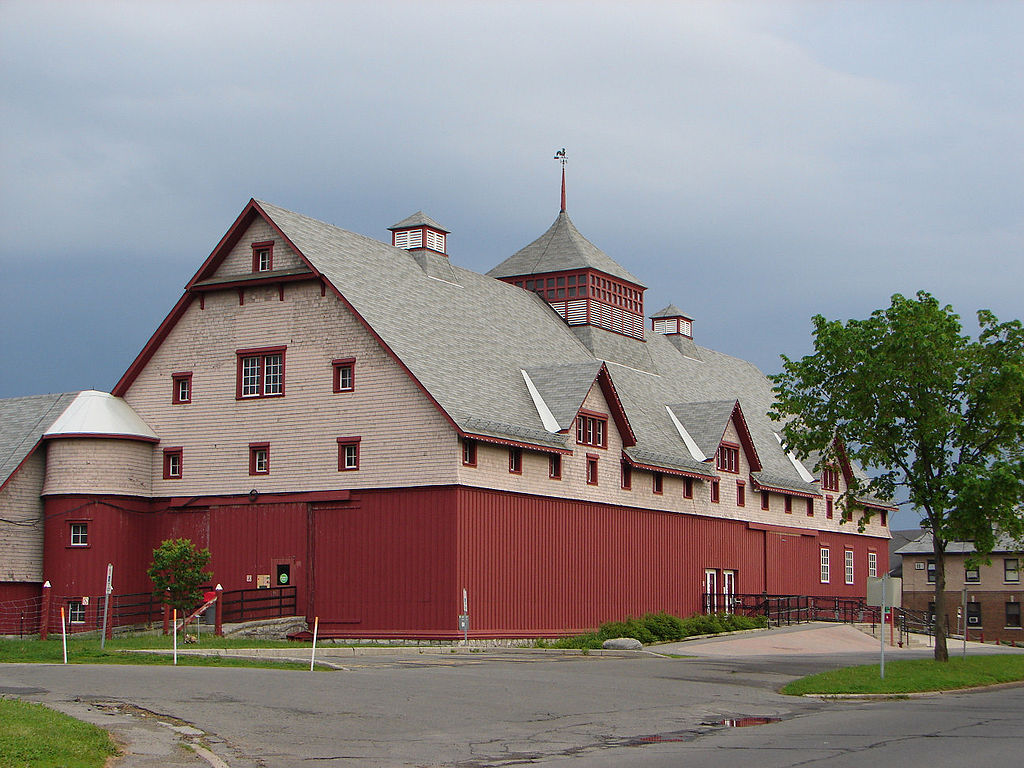
The first artist employed by the Horticulture division of the Central Experimental Farm - Faith Fyles
FAITH FYLES - Section 40, Lot 80 SE, Grave 1
Faith Fyles was born September 30, 1875 in Cowansville, Quebec. Her father was the Reverend Dr. Thomas Fyles, an Anglican clergyman (He was also an amateur entomologist and botanist whom Fyles often accompanied on field trips. As well, her father was an artist and encouraged Fyles’ artistic talent.) who came to Canada from England to establish churches.
Fyles graduated from high school with honours, entered McGill University with a first-class scholarship and completed a B.A. degree. Between graduating from McGill in 1900 and joining the Department of Agriculture in 1909, Faith Fyles taught school — one of the few occupations open to women at the time. She taught at the Dunham Ladies’ College in Dunham, Quebec, and later at the Bishop Strachan School in Toronto. At BSS Fyles taught botany.
After graduation, she spent a year studying the flora of Quebec with her father and took art classes. Fyles then taught school for six years, which was followed by a year travelling and studying in Europe.
In 1910, the Department of Agriculture (now Agriculture and Agri-Food Canada) hired Fyles as an assistant seed analyst. A seed analyst did routine, tedious work, testing seed samples for weed contamination and germination vigour — factors important in agricultural productivity. Because women were considered to be better at such detailed work, the positions were described as “women’s work.”
In August 1911, Fyles’ botanical training in university led to her appointment as the first woman assistant botanist at the Central Experimental Farm (CEF), part of the Department of Agriculture. Her appointment reflected a shift in the federal civil service toward hiring professionals (those with university degrees) over self-taught amateurs.
The Central Experimental Farm is located in Ottawa, Ontario and was established in 1886 as the central research station for the federal Department of Agriculture. The Farm continues that scientific focus as the location for laboratories and research plots for the Ottawa Research and Development Centre. The Central Experimental Farm is also a National Historic Site of Canada and home to Agriculture and Agri-Food Canada headquarters. The Farm and some of its attractions are open to the public throughout the year.
Some speculated her hiring was also due, at age 36, to the unlikelihood of Fyles quitting due to marriage or children. As well, the salaries offered to women were much lower than men could earn in the public sphere. Fyles was put in charge of the Botanical Garden (part of the CEF Arboretum), the Herbarium, and the identification of plants sent to and collected by her branch. Outside work, she was an active member of the Ottawa Field-Naturalist Club, and she continued to paint.
Fyles also helped young aspiring botanists, such as Dr. Dorothy Swales (née Newton). Swales later became curator of the Macdonald College (McGill University) herbarium in the 1960s. As a young girl, Swales mentioned her trouble identifying some wildflowers to her brother, who worked at the CEF. He told Fyles, who offered to identify any plants Swales sent to her. Swales also later described a visit Fyles made to Swales’ home in Plaisance, Quebec, writing that Fyles spent the day with her “in the fields and woods, explaining the flower parts and pointing out what to observe carefully.”
Two years later, she was transferred to the Botany Division at the Experimental Farm as an assistant botanist, where she was put in charge of the Arboretum. She was also responsible for identifying the large number of plants sent to, or collected by, the division. During this time Fyles also prepared a bulletin, Principal Poisonous Plants of Canada which was illustrator.
Faith Fyles was one of the Department of Agriculture’s few female employees to travel for fieldwork, an activity not considered safe or proper for women. For example, in 1914, she toured western Canada collecting and preparing poisonous weeds for the department’s herbarium. From this fieldwork, she wrote and illustrated Principal Poisonous Plants of Canada.
The booklet, published in 1920, was the best-known of Fyles’ six publications. It reflected the CEF’s mandate to aid farmers and fruit growers by publishing free guides and instruction manuals that focussed on practical knowledge. Fyles’ poisonous plant booklet provided an easy-to-use guide for identifying and eradicating poisonous weeds that could sicken or kill horses and livestock. Of cursed crowfoot (Ranunculus sceleratus), for example, Fyles described the leaves as “rounded or heart-shaped, three lobed and toothed,” and noted that “any small portion of the leaf or flower, if eaten, will cause severe pain and serious inflammation.” Noting the plant’s French name — Mort au vaches — Fyles wrote that the buttercups “are considered especially dangerous to cows.” The booklet also had an impact outside the agricultural community.
A 7 July 1928 article in The Winnipeg Tribune, for example, reported that Principal Poisonous Plants of Canada, then available for 25 cents, “should be in the camp library of every scoutmaster.” The article also described Fyles as “Canada’s leading artist-botanist.” Fyles illustrated the booklet with a combination of watercolours, black and white drawings, photographs of her watercolours, and photographs of actual plants. As well, she contributed eight miniature black and white illustrations of landscapes and plants.
In 1920 Fyles became the first artist employed by the Horticulture division, where she worked under William Tyrrell Macoun. Additional publications and the creation of a herbarium came from her work in the Department.
In 1931 poor health forced her retirement, but she continued painting in oils, pastels and watercolours. For two decades she had entered her work in Royal Canadian Art exhibitions and exhibited it elsewhere, work that expressed an appreciation of nature's beauty, especially that of plants and flowers. She participated in exhibitions held by the Art Association of Montreal, the Royal Canadian Academy of Arts, and private galleries. Lady Byng, wife of the Governor General, hired Fyles in 1926 to paint her Rideau Hall rock garden. Fyles died on October 22, 1961.



